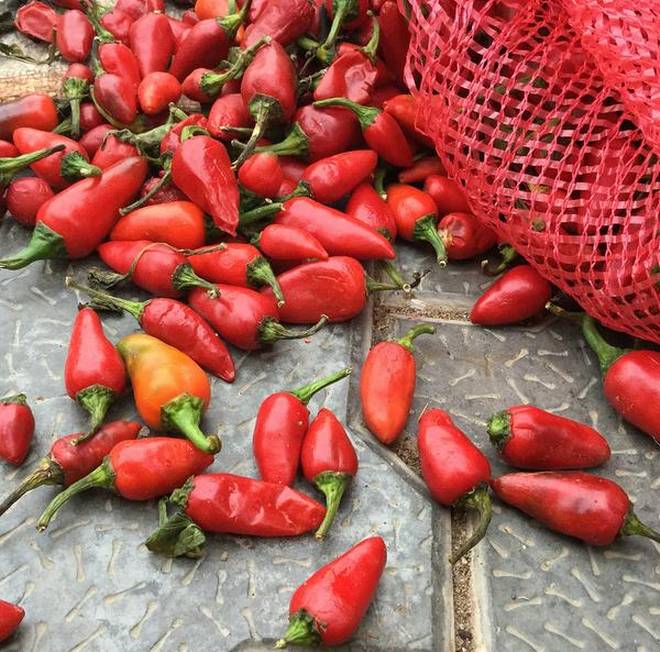The monsoons are the right time for chilli saplings to thrive. In a few months, they will be ready for picking. While the first crop is plucked while still green, the subsequent ones start to show a dash of red. Towards the end of the harvest, the last few cycles of chillies are allowed to ripen, sun-dried and stored as dried red chillies for use through the year.
The pandu mirapakaya pachadi, as it is known in Telugu, tastes as fiery as it looks. This ripe red chilli pickle is famous in Andhra cuisine. A popular home-made delicacy, it is usually a family recipe, handed down generations. As soon as the summer heat abates, we reach across the table for a spoonful of this mouthwatering condiment to go with a helping of curd rice. The glistening residue of the chilli oil leaves a marbled pattern of red and white on the plate.
The reason we love the Thai red curry is also because it makes wonderful use of the chilli in its ripened state. A fruity element comes through despite the extreme of spices. While the number of available chilli varieties is truly staggering, the ones used most commonly in India are Guntur, Kashmiri, byadagi, Kanthari and mundu chillies.
Chilli jam is yet another way of preserving the ripe red ones. Cooking it with red capsicum, sugar and pectin results in a sticky, sweet-spicy preserve that pairs brilliantly with sharp cheeses and meats.
Interestingly, the word capsaicin, a compound prevalent in chillies, is derived from the word capsicum. Yet, capsaicin is virtually non-existent in capsicums. The hotter the chilli, the greater the amount of capsaicin. When eaten in the right quantities, capsaicin aids pain relief and is also known as the receptor for the TRPV1 gene, which regulates body temperature and is responsible for recognising the sensations of heat and pain.
The heat generated by capsaicin triggers a response in the brain, to produce an anti-inflammatory effect that will counter cell damage. It also helps in reducing headaches, nausea and certain skin conditions. This is, once again, a reminder of why some ingredients are used in many traditional recipes.








